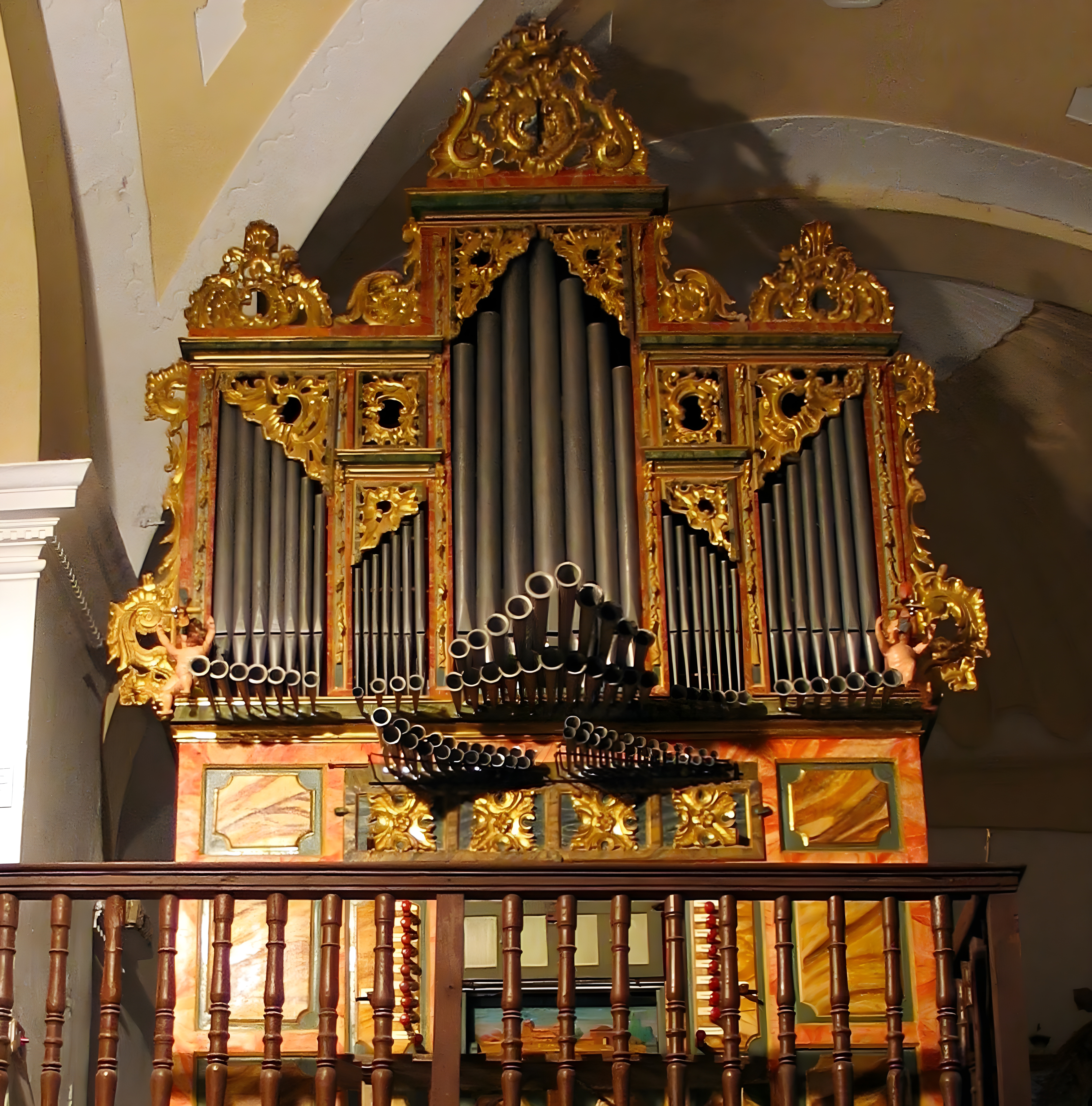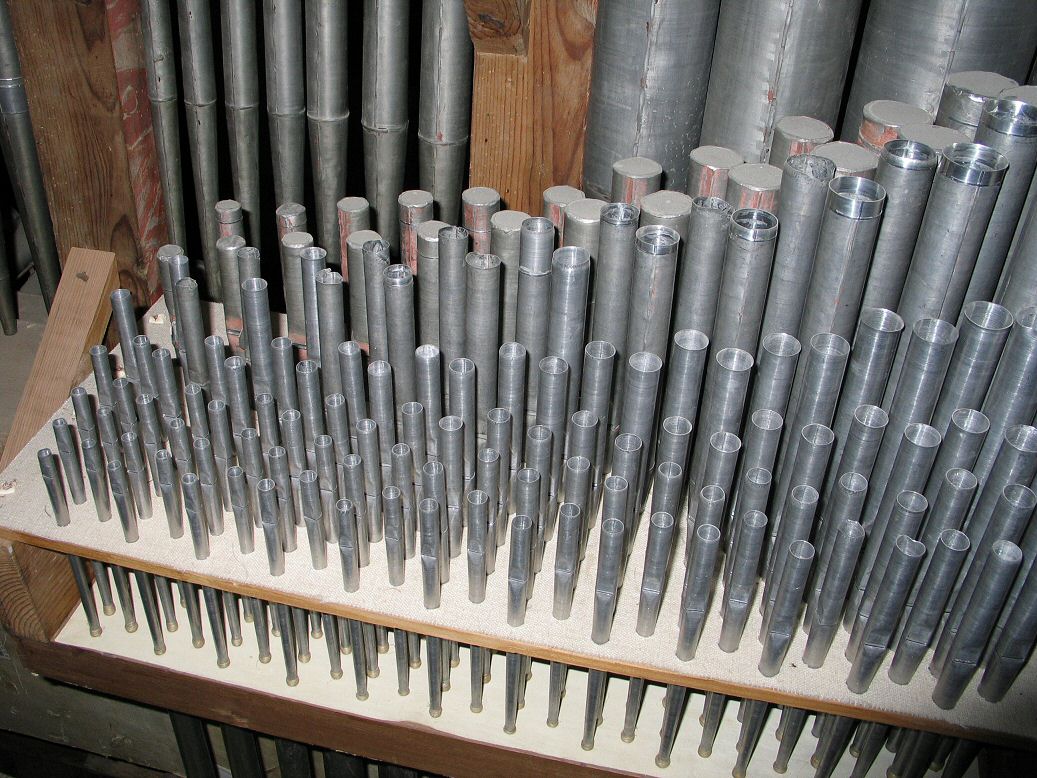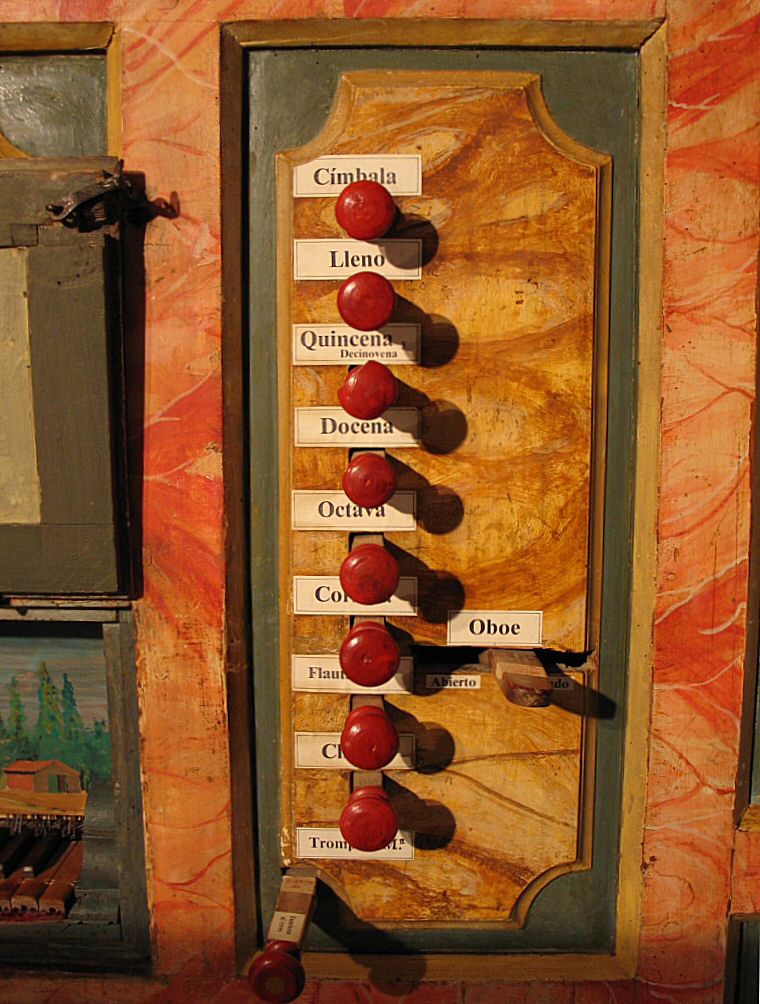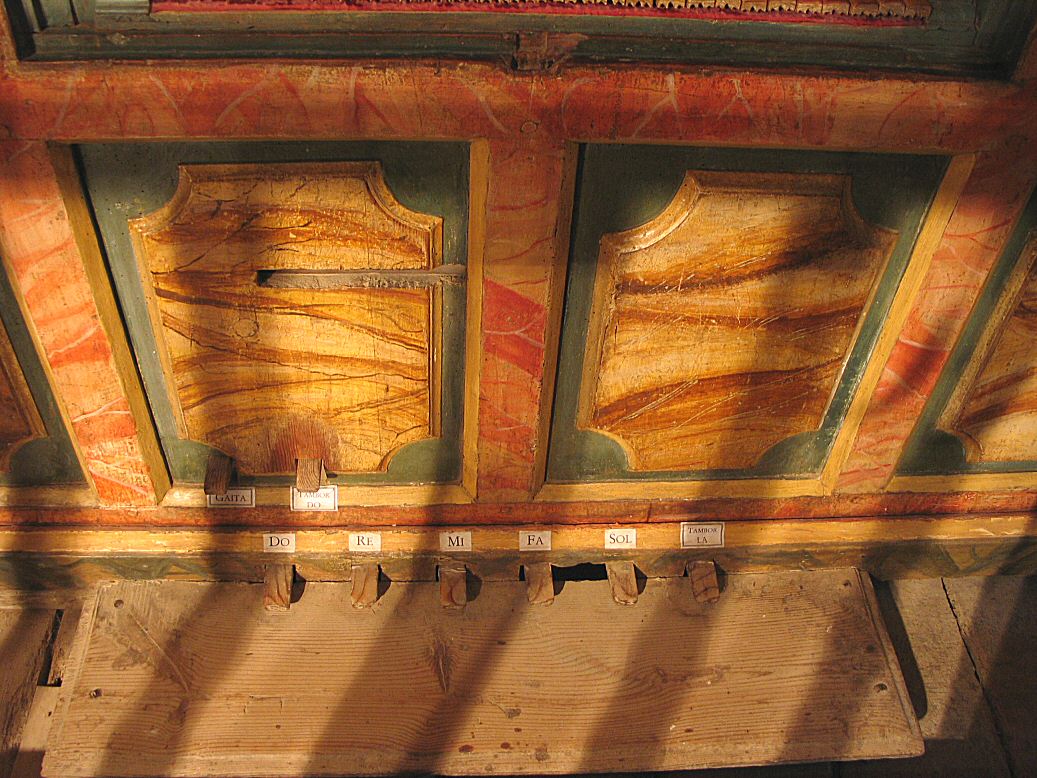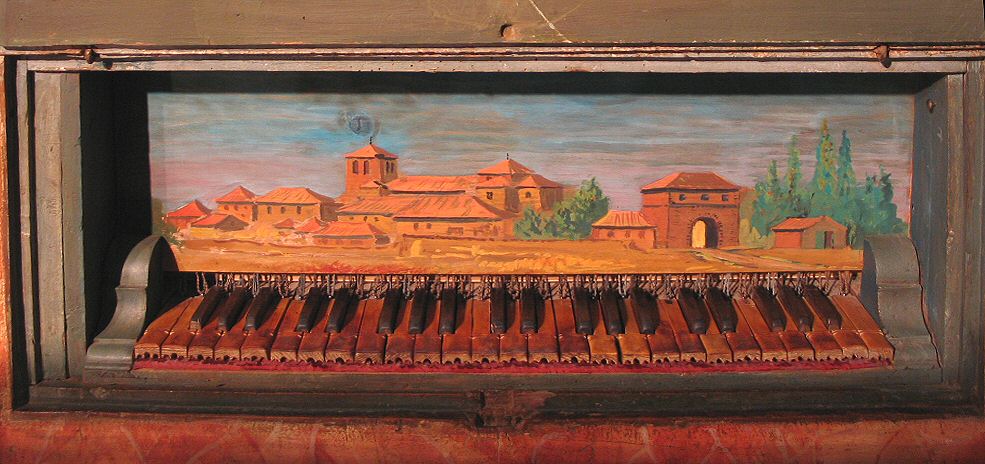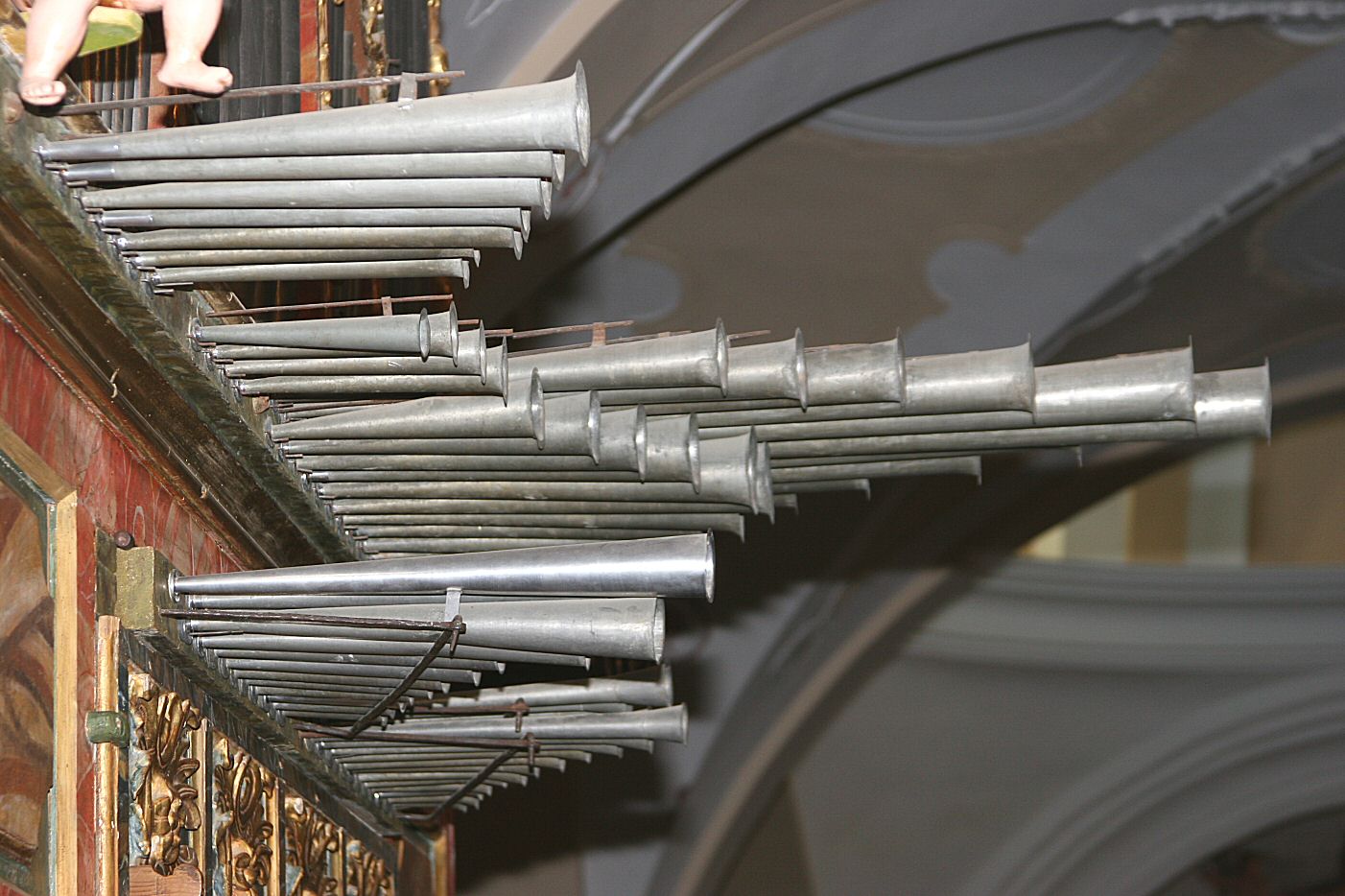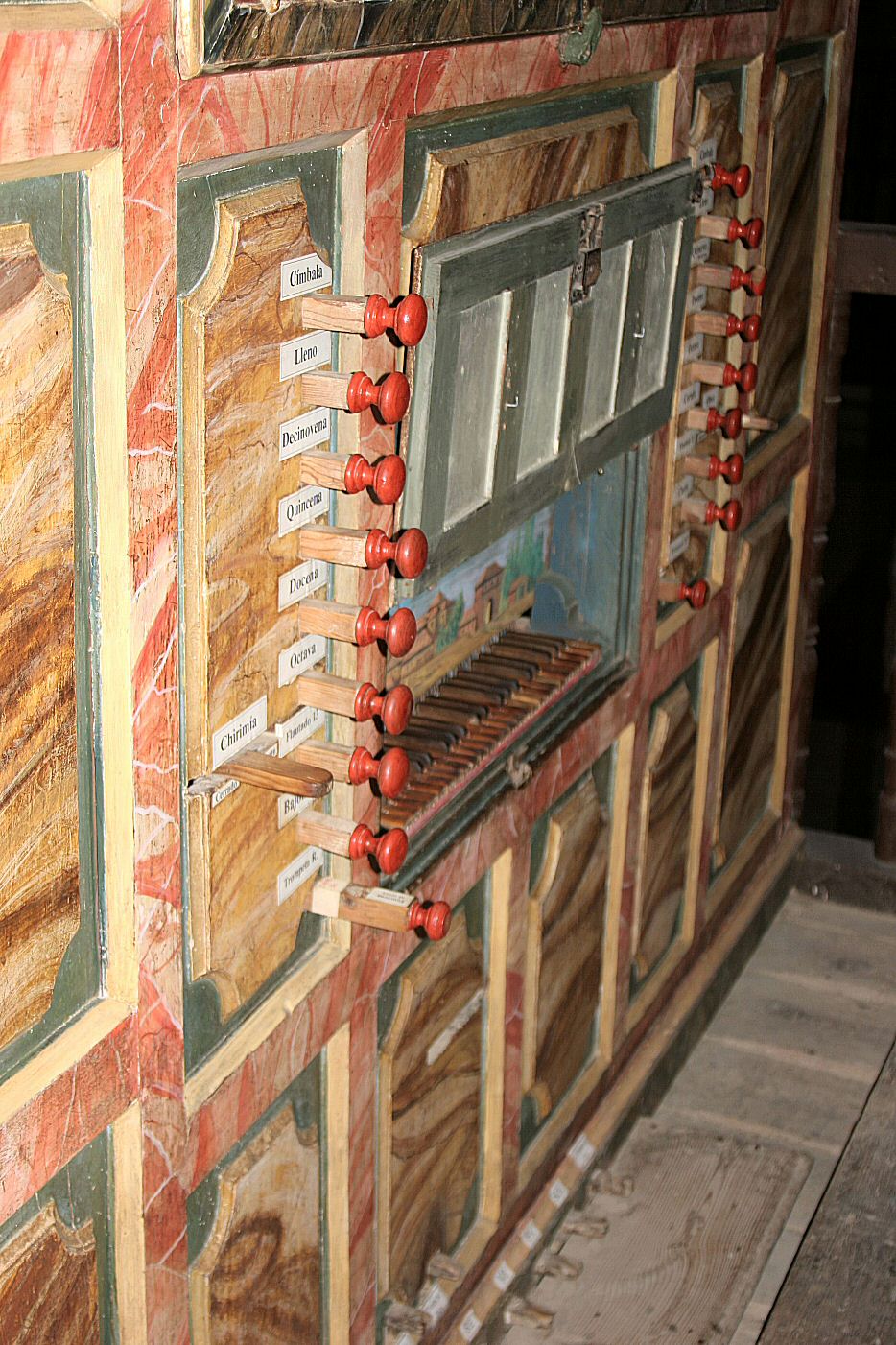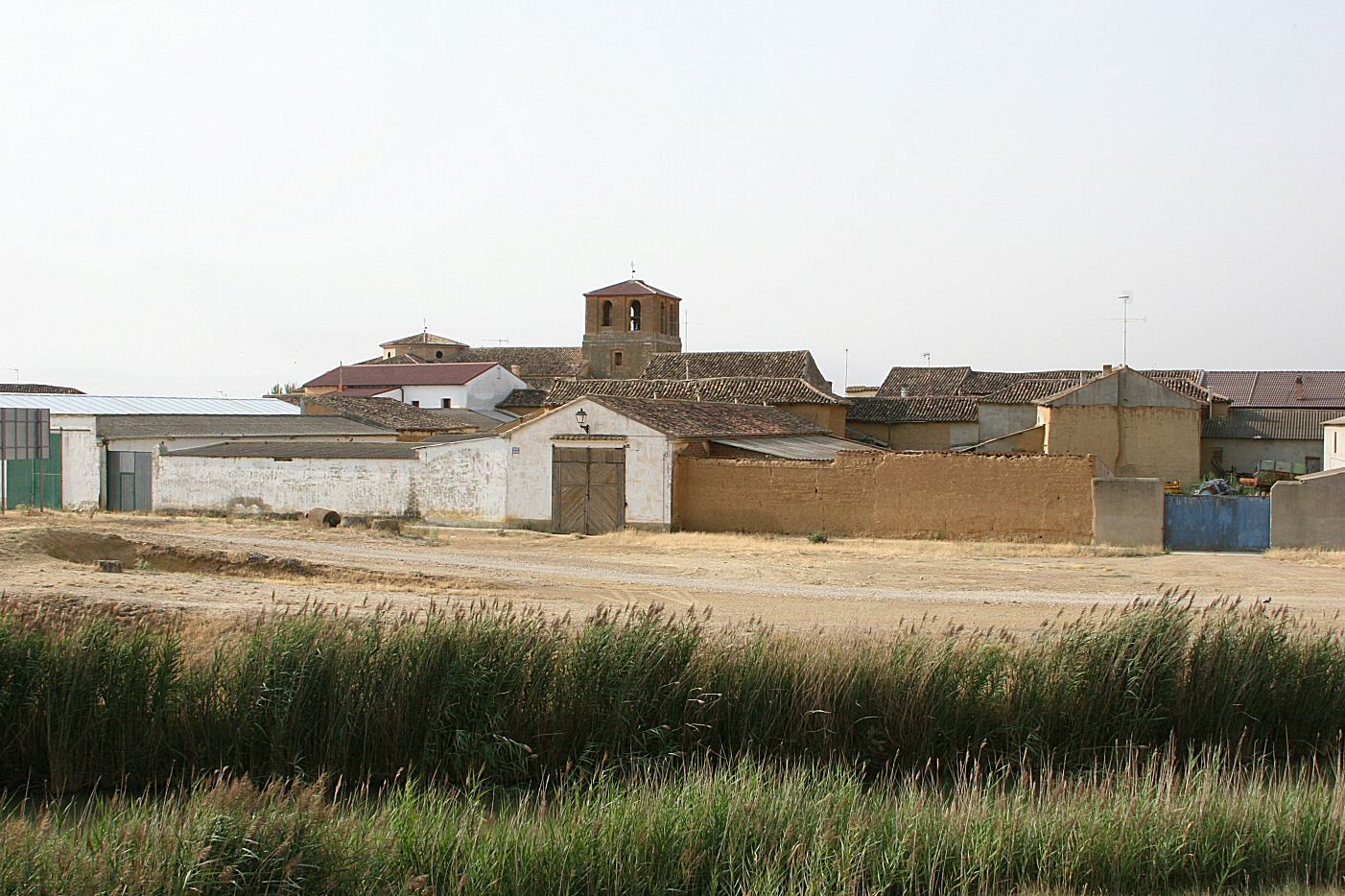Capillas, Iglesia de San Agustín
| Builder | T. Ortega |
|---|---|
| Year | 1776 |
| Period/Style | Baroque |
| Stops | 11 |
| Keyboards | 1+P |
| Keyaction | tracker/mechanical |
| Sampleset |
Available
 , sampled by
OrganArt Media
, sampled by
OrganArt Media
|
The 1776 Tadeo Ortega organ in the Iglesia de San Agustín in Capillas, Palencia, represents a significant piece in the history of Castilian organ-building. Built by Tadeo Ortega, this instrument marks his debut as an organ-builder at the age of twenty-seven. Characterized by its robust sound and low wind pressure, the organ combines a fine flue chorus with distinctly rustic reeds, offering a sound profile that starkly contrasts with the more refined instruments found elsewhere. Although it suffered significant damage and neglect throughout the twentieth century, resulting in a near ruinous state by the mid-century, the organ saw partial repairs in the late 1980s and underwent a comprehensive restoration in 1997 by Alain Faye in France. This restoration endeavored to preserve as much of the original material as possible, including soundboards and mechanisms, while also integrating new pipes modeled after the original designs.
Tadeo Ortega’s life and career as an organ builder are reflective of his contribution to the regional tradition of Castilian organ construction. Born in Burgos in 1749 and later based in Palencia, Ortega built or rebuilt around 25 organs primarily in the Tierra de Campos region until his death in 1823. His work, including the organ at Capillas and other instruments that remain in near-original condition, showcases not only mechanical robustness but also impressive tonal quality. His instruments, often overlooked during his lifetime, now stand as testaments to his craftsmanship and are celebrated for their enduring functionality and aesthetic appeal. The restoration of his work continues, highlighting the regional heritage and the historical value of his contributions to the field of organ building.
Tadeo Ortega’s life and career as an organ builder are reflective of his contribution to the regional tradition of Castilian organ construction. Born in Burgos in 1749 and later based in Palencia, Ortega built or rebuilt around 25 organs primarily in the Tierra de Campos region until his death in 1823. His work, including the organ at Capillas and other instruments that remain in near-original condition, showcases not only mechanical robustness but also impressive tonal quality. His instruments, often overlooked during his lifetime, now stand as testaments to his craftsmanship and are celebrated for their enduring functionality and aesthetic appeal. The restoration of his work continues, highlighting the regional heritage and the historical value of his contributions to the field of organ building.
| Manual (Bajos | Tiples) | Pedal (always attached) |
|---|---|
| Flautado 13 8' | |
| Octava 4' | |
| Docena 2 2/3' | |
| Quincena 2' | Quincena y Decinovena 2' + 1/3' | |
| Decinovena 1 1/3' | - | |
| Lleno | |
| Cimbala | |
| - | Corneta | |
| Trompeta Real 8' | Clarin 8' | |
| Bajoncillo 4' | Oboe 8' | |
| Chirimia 2' | Trompeta Magna 16' |
Alvarado-Pange lingua
0:00
0:00
Cabanilles-Corrente italiana
0:00
0:00
Cabezon Tiento 1 tono
0:00
0:00
https://www.organartmedia.com/en/tadeo-ortega
 Pipe Organ Map
Pipe Organ Map